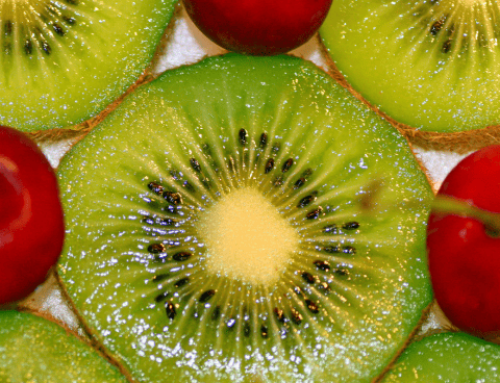Milk has been a hot topic in nutrition for the past few years.
For one, some evidence suggests that full-fat milk might actually be better for you than people thought. Second, a growing number of people have cut out cow’s milk altogether because they have trouble digesting it. Third, the rise of non-dairy alternatives—such as almond and soy milks—has been precipitous. Now, there’s a new development in the milk world—and it comes from an ass.
I’m talking, of course, about donkey milk (what did you think I meant?). Donkey’s milk—a.k.a., ass milk—is gaining momentum as a health food and a supposedly nutritionally superior option to regular ol’ cow milk. But can this odd dairy product really become the next big superfood? STACK investigates.
An Ancient Elixir

Donkey milk is currently garnering attention as a potential superfood, but its use by humans dates back much further than 2016.
Cleopatra, the last active pharaoh of the Egyptian empire, is rumored to have bathed regularly in donkey milk, believing it helped preserve the beauty and youth of her skin. Poppa Sabina—the second wife of Roman Emperor Nero—is said to have done the same, as did Pauline Bonaparte—Napoleon’s sister.
RELATED: How Do These 6 Milk Alternatives Stack Up?
Hippocrates, widely referred to as the “Father of Western Medicine,” is believed to have recommended donkey milk for a variety of ailments. In the Bolivian Andes, donkey milk is commonly used to fight respiratory illness. Up through the 19th century, donkey milk was regularly used as a substitute for human breast milk in areas like France, Catalonia and Southern Italy. The taste is reportedly quite pleasant, with many citing it as similar to skim cow’s milk but a tad sweeter.
All those different applications make donkey milk sound like a panacea. But what do the nutrition facts say?
A Friendlier Form of Dairy

From a nutritional standpoint, donkey milk shares many characteristics with human breast milk. “[Donkey] milk is very similar to human milk,” Dr. Giovanna Monti, a pediatrician at St. Anna hospital in Turan, recently told the BBC. In particular, the PH, protein, lactose and whey protein levels of donkey milk are close to those of breast milk.
Check out this chart from a study by the University of Camerino:

The link between donkey milk and breast milk is important. Several studies have found that donkey milk is well-tolerated by many infants who have a cow milk protein allergy (CMPA). A 2014 study found that donkey milk “proved to be the best alternative in feeding infants affected by CMPA, since its chemical composition is comparable to human milk.” For adults who struggle to digest cow milk, donkey milk might offer similar relief.
RELATED: Is Cutting Dairy From Your Diet Really Worth It?
The milk humans are best equipped to digest is breast milk, since it comes from our own species. Cow milk is what’s known as “ruminant” milk—meaning it comes from an animal with multiple stomachs. Since humans aren’t ruminant mammals, we are not fully equipped to digest that type of milk. Like humans, donkeys have just one stomach—which might be the reason why people who can’t tolerate cow milk are able to consume donkey milk without issue. According to the Food and Agriculture Organization of the United Nations, “the protein profiles of mare and donkey milk may make them more suitable for the 2-6 percent of the population allergic to cow milk.”
Also, donkey milk is much lower in A1 casein than most varieties of cow milk. A1 casein is a phosphoprotein found in high volumes in much of the cow milk produced inside the U.S. According to Kamal Patel, director of research for the health and nutrition website Examine.com, recent studies on mice suggest that A1 casein could cause inflammation in the gut. An inflamed gut can lead to something called “leaky gut syndrome.” When the gut wall gets irritated or inflamed, it loses its selective permeability. A healthy gut allows only specific beneficial things—like vitamins and amino acids—to escape through the gut wall and into the bloodstream. A leaky gut loses this ability, often letting harmful things like undigested food particles, toxins and microbes escape from the gut and enter the bloodstream. That can throw the immune system out of whack and lead to a host of issues.
Compared to cow milk, donkey milk also contains less total fat but more omega-3 fatty acids, which help combat inflammation, which is another reason someone might feel better on donkey milk.
In addition to its role as a beverage, donkey milk’s cosmetic applications are still around today. A simple search on Amazon reveals donkey milk-infused products such as face cream, body lotion, soap, hand cream and lip balm. Though donkey milk has long been believed to have beautifying potential, research in the field is still sparse. However, there’s reason to believe donkey milk could foster healthy skin. It has four times as much vitamin C as cow milk and it also contains significant amounts of vitamins A, B1, B2, B6, D and E. These vitamins moisturize the skin, fight inflammation and combat aging. Products made with donkey milk are often used to treat skin conditions like psoriasis or eczema.
The Verdict
Though donkey milk really has promising benefits, don’t expect to see it supplant cow milk any time soon. Production is a big reason why. From a biological standpoint, cows are able to produce much greater volumes of milk than donkeys. Milking a donkey only yields about one liter per day per animal, while the average dairy cow can produce more than ten times that. But if you do stumble across donkey milk or a donkey milk-infused product at your local health food store, there’s no reason why you shouldn’t give it a try. You might discover your new favorite form of dairy.
RECOMMENDED FOR YOU
MOST POPULAR
Milk has been a hot topic in nutrition for the past few years.
For one, some evidence suggests that full-fat milk might actually be better for you than people thought. Second, a growing number of people have cut out cow’s milk altogether because they have trouble digesting it. Third, the rise of non-dairy alternatives—such as almond and soy milks—has been precipitous. Now, there’s a new development in the milk world—and it comes from an ass.
I’m talking, of course, about donkey milk (what did you think I meant?). Donkey’s milk—a.k.a., ass milk—is gaining momentum as a health food and a supposedly nutritionally superior option to regular ol’ cow milk. But can this odd dairy product really become the next big superfood? STACK investigates.
An Ancient Elixir

Donkey milk is currently garnering attention as a potential superfood, but its use by humans dates back much further than 2016.
Cleopatra, the last active pharaoh of the Egyptian empire, is rumored to have bathed regularly in donkey milk, believing it helped preserve the beauty and youth of her skin. Poppa Sabina—the second wife of Roman Emperor Nero—is said to have done the same, as did Pauline Bonaparte—Napoleon’s sister.
RELATED: How Do These 6 Milk Alternatives Stack Up?
Hippocrates, widely referred to as the “Father of Western Medicine,” is believed to have recommended donkey milk for a variety of ailments. In the Bolivian Andes, donkey milk is commonly used to fight respiratory illness. Up through the 19th century, donkey milk was regularly used as a substitute for human breast milk in areas like France, Catalonia and Southern Italy. The taste is reportedly quite pleasant, with many citing it as similar to skim cow’s milk but a tad sweeter.
All those different applications make donkey milk sound like a panacea. But what do the nutrition facts say?
A Friendlier Form of Dairy

From a nutritional standpoint, donkey milk shares many characteristics with human breast milk. “[Donkey] milk is very similar to human milk,” Dr. Giovanna Monti, a pediatrician at St. Anna hospital in Turan, recently told the BBC. In particular, the PH, protein, lactose and whey protein levels of donkey milk are close to those of breast milk.
Check out this chart from a study by the University of Camerino:

The link between donkey milk and breast milk is important. Several studies have found that donkey milk is well-tolerated by many infants who have a cow milk protein allergy (CMPA). A 2014 study found that donkey milk “proved to be the best alternative in feeding infants affected by CMPA, since its chemical composition is comparable to human milk.” For adults who struggle to digest cow milk, donkey milk might offer similar relief.
RELATED: Is Cutting Dairy From Your Diet Really Worth It?
The milk humans are best equipped to digest is breast milk, since it comes from our own species. Cow milk is what’s known as “ruminant” milk—meaning it comes from an animal with multiple stomachs. Since humans aren’t ruminant mammals, we are not fully equipped to digest that type of milk. Like humans, donkeys have just one stomach—which might be the reason why people who can’t tolerate cow milk are able to consume donkey milk without issue. According to the Food and Agriculture Organization of the United Nations, “the protein profiles of mare and donkey milk may make them more suitable for the 2-6 percent of the population allergic to cow milk.”
Also, donkey milk is much lower in A1 casein than most varieties of cow milk. A1 casein is a phosphoprotein found in high volumes in much of the cow milk produced inside the U.S. According to Kamal Patel, director of research for the health and nutrition website Examine.com, recent studies on mice suggest that A1 casein could cause inflammation in the gut. An inflamed gut can lead to something called “leaky gut syndrome.” When the gut wall gets irritated or inflamed, it loses its selective permeability. A healthy gut allows only specific beneficial things—like vitamins and amino acids—to escape through the gut wall and into the bloodstream. A leaky gut loses this ability, often letting harmful things like undigested food particles, toxins and microbes escape from the gut and enter the bloodstream. That can throw the immune system out of whack and lead to a host of issues.
Compared to cow milk, donkey milk also contains less total fat but more omega-3 fatty acids, which help combat inflammation, which is another reason someone might feel better on donkey milk.
In addition to its role as a beverage, donkey milk’s cosmetic applications are still around today. A simple search on Amazon reveals donkey milk-infused products such as face cream, body lotion, soap, hand cream and lip balm. Though donkey milk has long been believed to have beautifying potential, research in the field is still sparse. However, there’s reason to believe donkey milk could foster healthy skin. It has four times as much vitamin C as cow milk and it also contains significant amounts of vitamins A, B1, B2, B6, D and E. These vitamins moisturize the skin, fight inflammation and combat aging. Products made with donkey milk are often used to treat skin conditions like psoriasis or eczema.
The Verdict
Though donkey milk really has promising benefits, don’t expect to see it supplant cow milk any time soon. Production is a big reason why. From a biological standpoint, cows are able to produce much greater volumes of milk than donkeys. Milking a donkey only yields about one liter per day per animal, while the average dairy cow can produce more than ten times that. But if you do stumble across donkey milk or a donkey milk-infused product at your local health food store, there’s no reason why you shouldn’t give it a try. You might discover your new favorite form of dairy.












